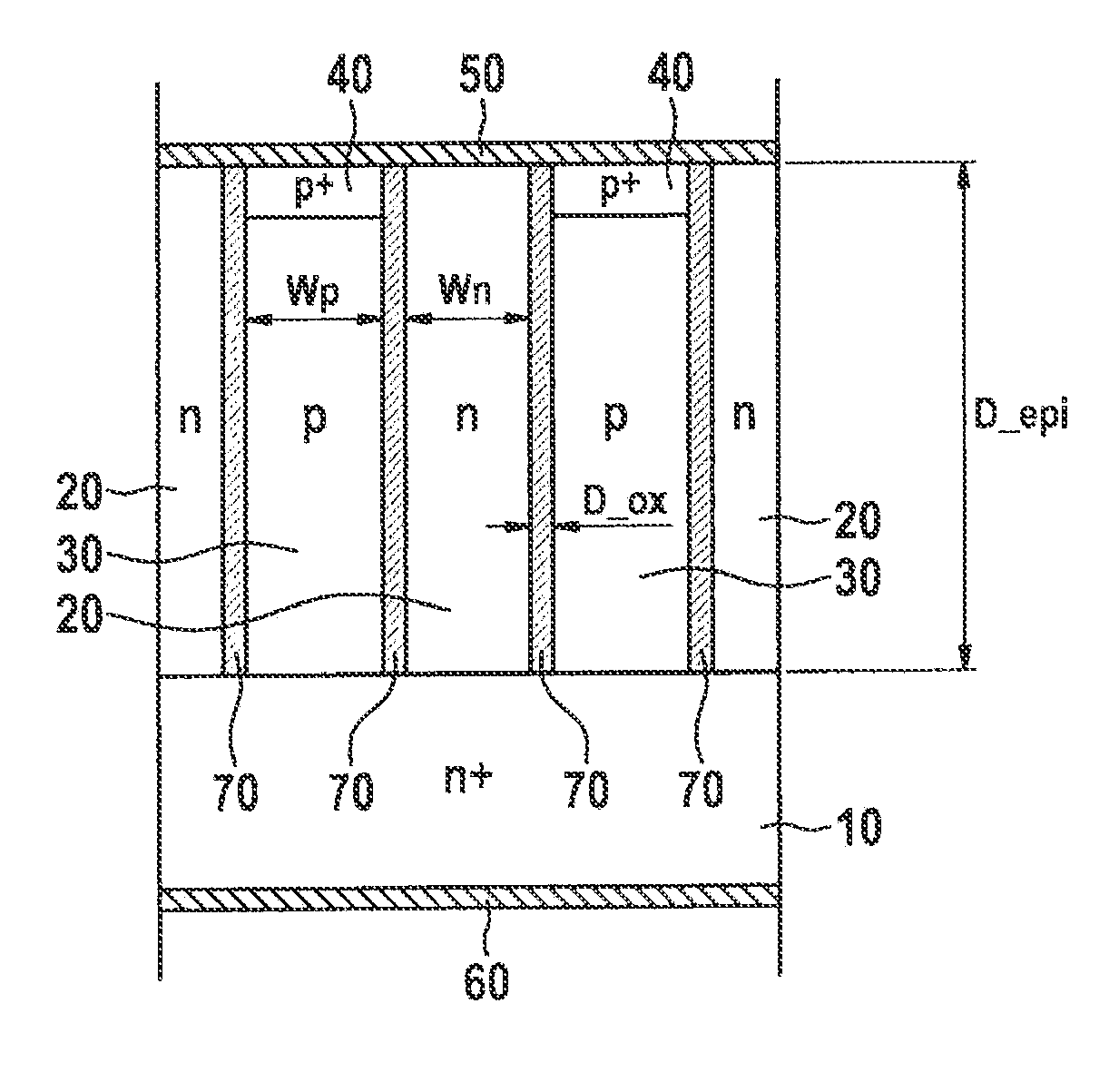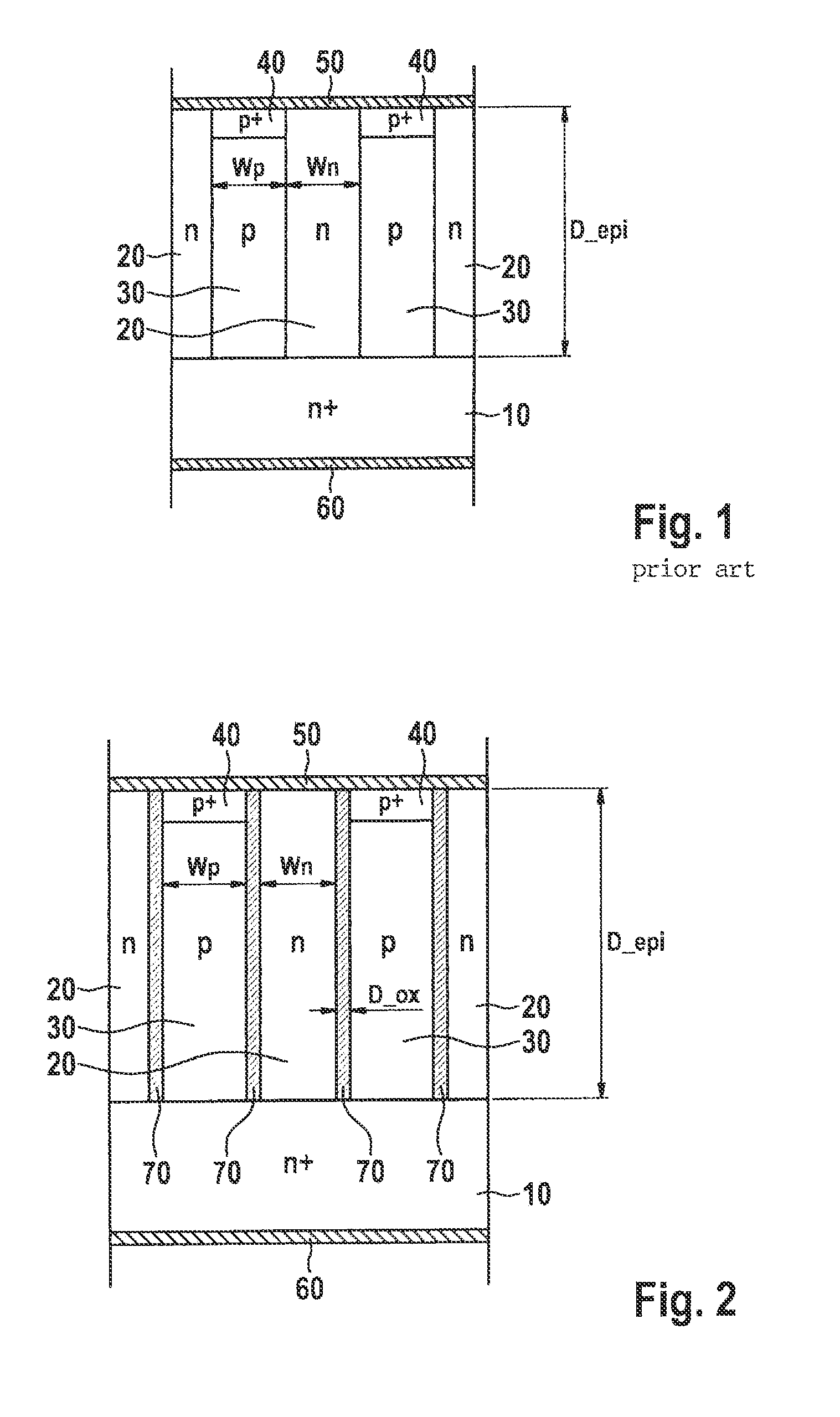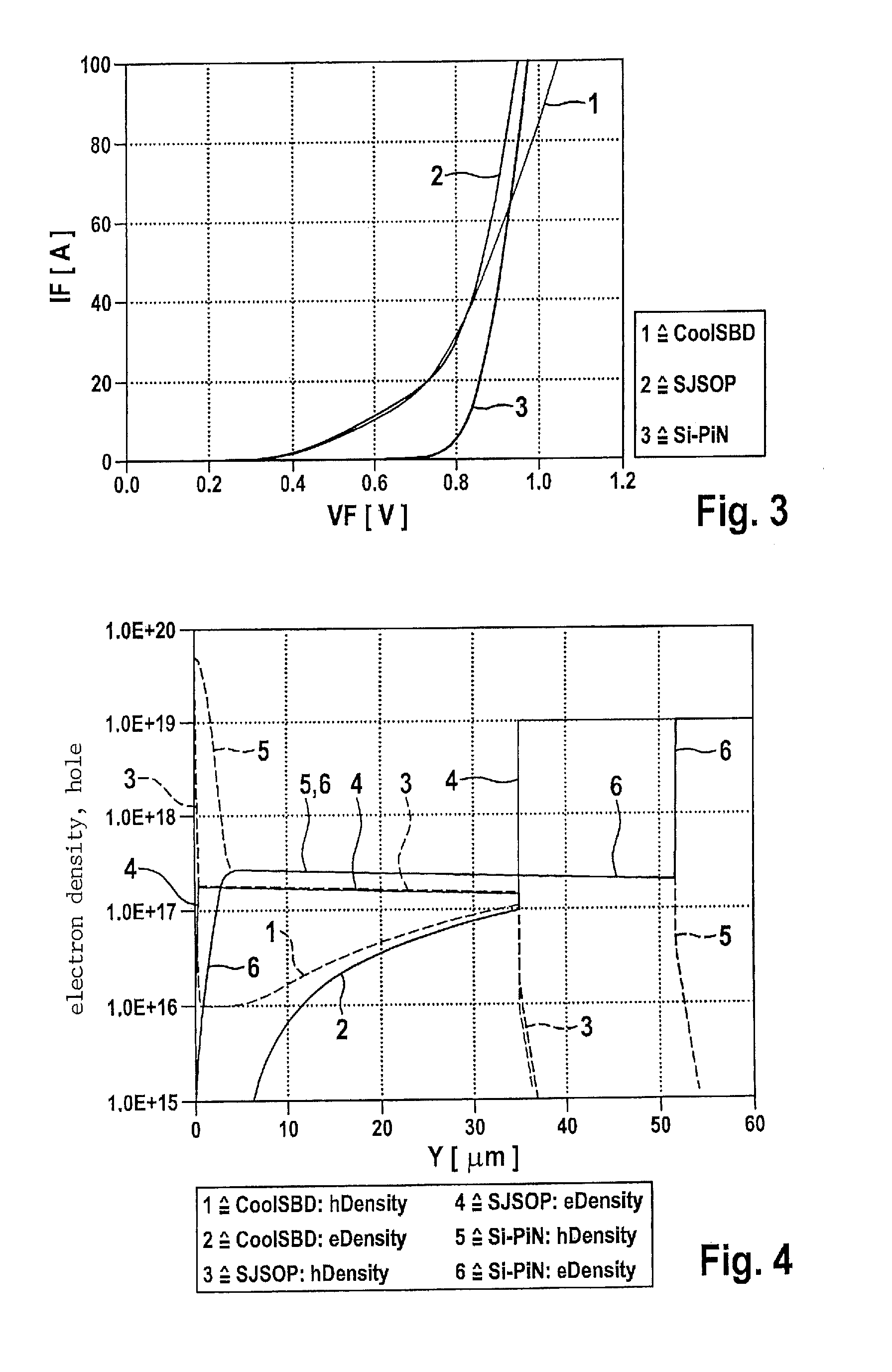Super-junction schottky PIN diode
a schottky pin and oxide diode technology, applied in the direction of basic electric elements, electrical equipment, semiconductor devices, etc., can solve the problems of high switching loss, high switching time and high switching loss of pin diodes, so as to reduce forward voltage, reduce switching loss, and reduce switching loss
- Summary
- Abstract
- Description
- Claims
- Application Information
AI Technical Summary
Benefits of technology
Problems solved by technology
Method used
Image
Examples
Embodiment Construction
[0024]FIG. 1 illustrates a detail of the structure of a Cool SBD corresponding to the related art, in cross section. The Cool SBD is composed of an n+ substrate 10 on which an n-epilayer 20 having thickness D_epi and doping concentration ND is arranged. n-epilayer 20 contains etched-in trenches 30 which are filled with p-doped silicon having doping concentration NA, and which in the upper regions are filled with p+-doped silicon 40. The width of n regions 20 is Wn, and the width of p and p+ regions 30 and 40, respectively, is Wp. Dopings and widths are selected in such a way that the regions are depleted when the full blocking voltage is applied (superjunction principle). This is the case, for example, for NA·Wp=ND·Wn=1012 cm−2. On the front side of the chip, n-doped regions 20 and p+-doped regions 40 are covered by a continuous first metal layer 50, which with n-doped regions 20 forms a Schottky contact, and with p+-doped regions 40 forms an ohmic contact. Metal layer 50 represents...
PUM
 Login to View More
Login to View More Abstract
Description
Claims
Application Information
 Login to View More
Login to View More - R&D
- Intellectual Property
- Life Sciences
- Materials
- Tech Scout
- Unparalleled Data Quality
- Higher Quality Content
- 60% Fewer Hallucinations
Browse by: Latest US Patents, China's latest patents, Technical Efficacy Thesaurus, Application Domain, Technology Topic, Popular Technical Reports.
© 2025 PatSnap. All rights reserved.Legal|Privacy policy|Modern Slavery Act Transparency Statement|Sitemap|About US| Contact US: help@patsnap.com



